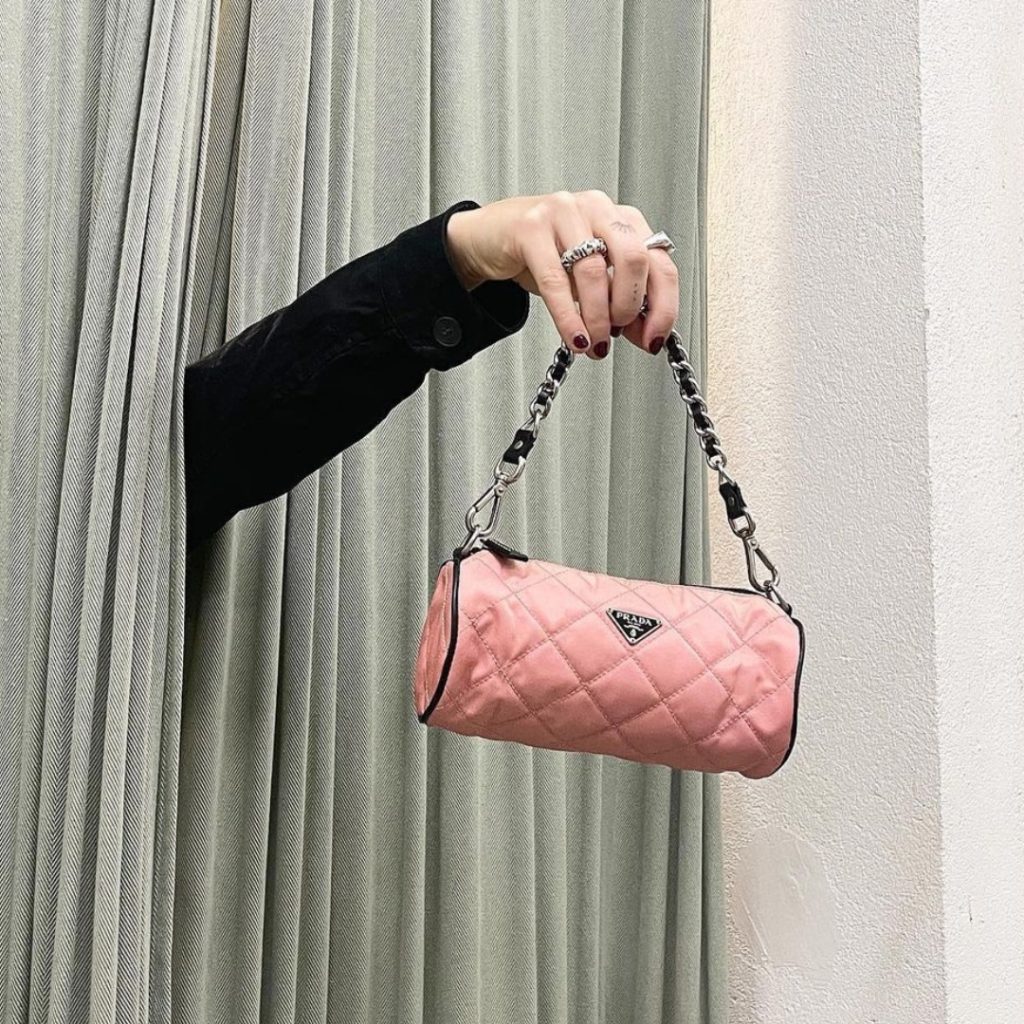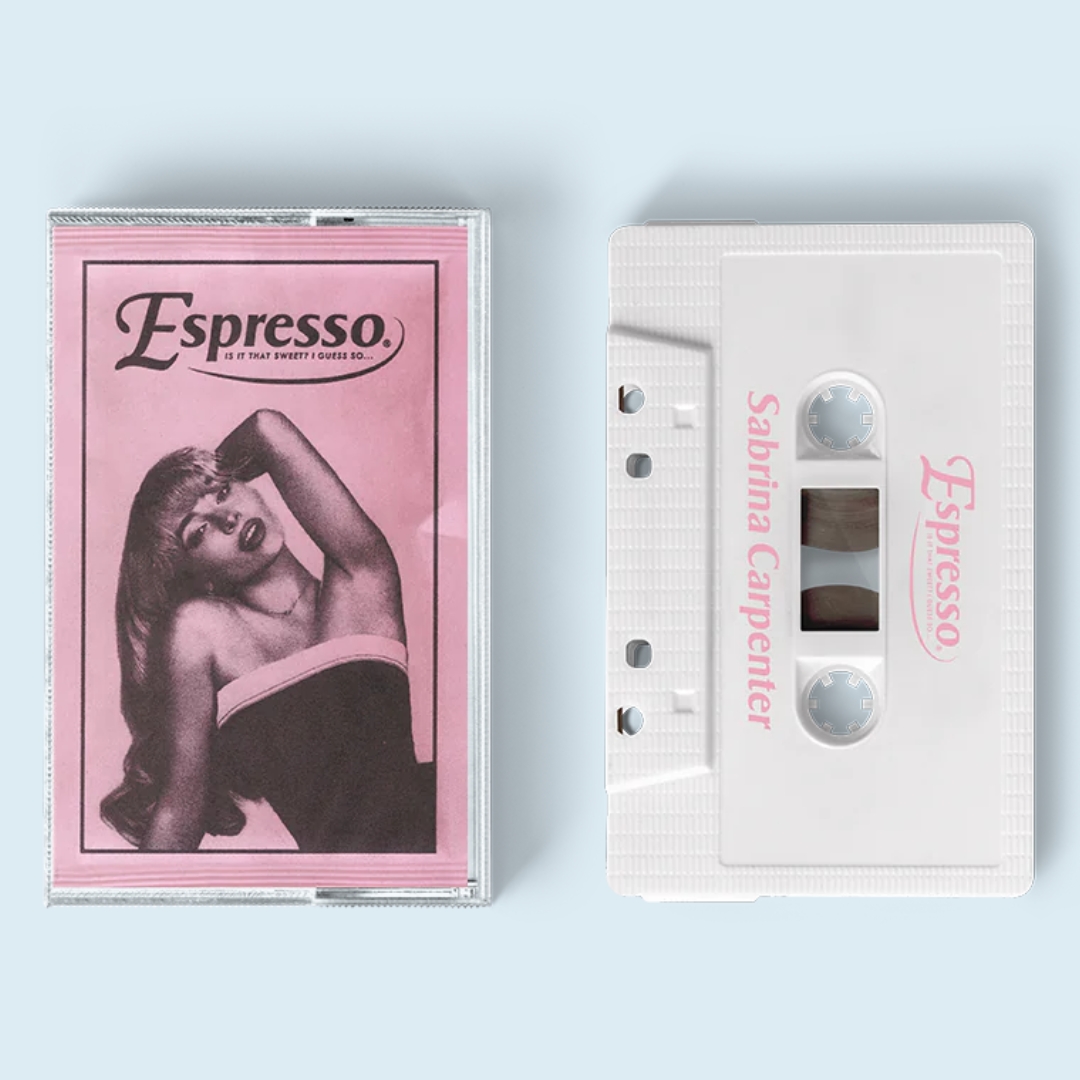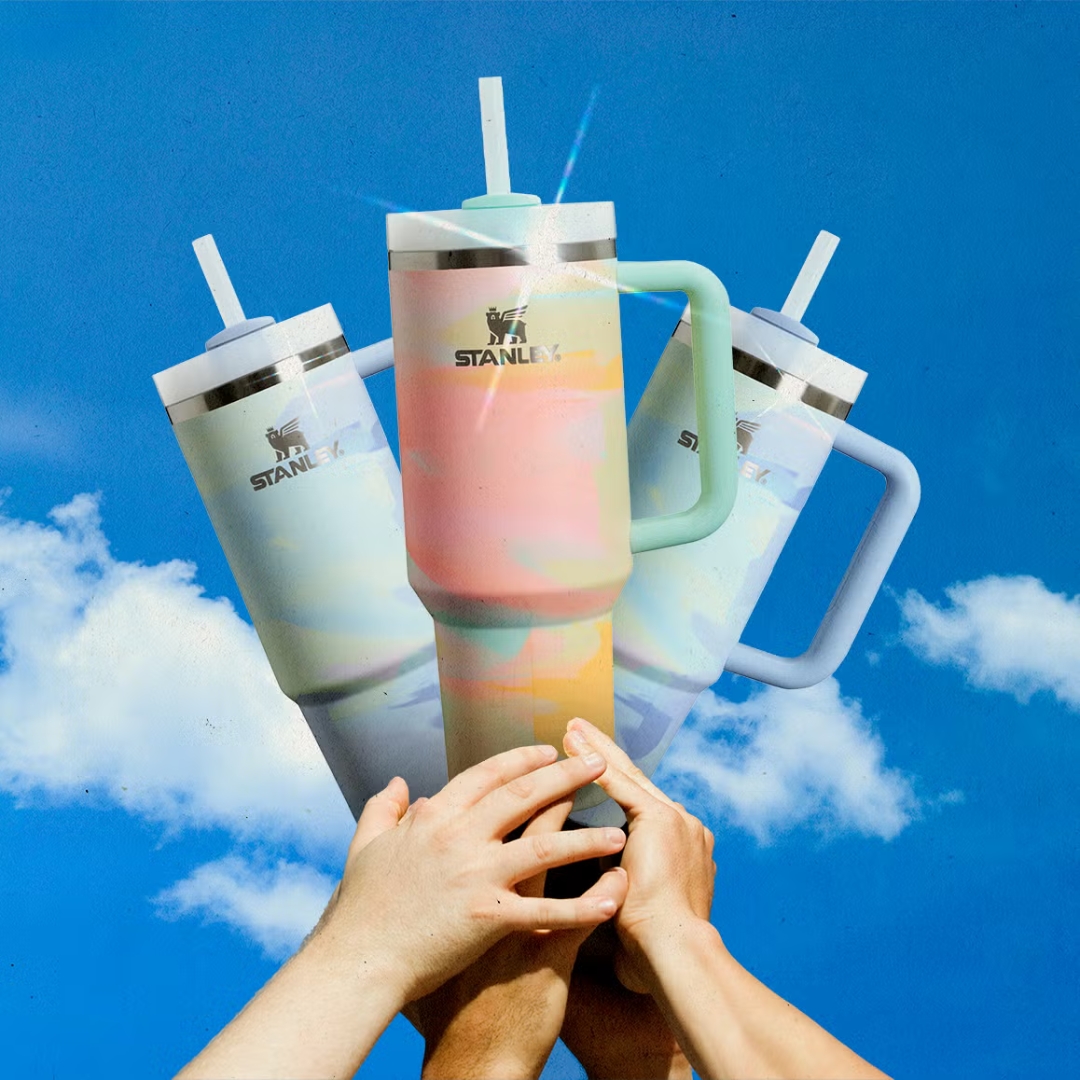My spiralling began when I saw an American Apparel tennis skirt being peddled as vintage on Depop. It was only about a decade ago I was coveting the Tumblr-hyped piece, and now I was staring back at its familiar wide pleats on my phone screen, pulling my age into focus. My spiralling continued as other formative pieces from my teen years also received this so-called vintage treatment. I’ve spotted Forever21 skater skirts and Billabong sweatshirts slapped with ‘vintage’ labels (I fear for the day a Supré bow headband makes the cut-off ).
The frightening reality is that these secondhand resellers aren’t far off from the truth. It’s widely accepted that when clothing has circulated for 20 years, it’s considered vintage. Much to the chagrin of some, there’s no denying Y2K’s bedazzled resurgence—but Von Dutch sweatpants and Ed Hardy tees are not only back, they’re now certified vintage.
The secondhand fashion market is growing, but what is it growing with? Globally, the preloved fashion industry is set to reach a whopping USD$350 billion by 2027, doubling its 2023 value.
At the same time, Australia is the biggest consumer of fashion per capita, each of us buying an average of 56 new items every year. Australians may be leaning into secondhand fashion, but we’re not leaning out of our fast fashion addiction. Where does that leave the future of vintage fashion? “In the past, clothing was made to pass down, to alter, to update, to share with other wearers. But fast fashion has a very short timeframe—it’s a big reason why fashion is such a wasteful and environmentally unsustainable industry these days,” Melbourne-based fashion historian and author Nicole Jenkins tells Cosmopolitan Australia.
"The thing about people who buy fast fashion is that they usually have a lot of it, so they aren't bringing in one tote bag, they’re bringing six rubbish bags full of fast fashion"
Our love affair with contradictory fashion is evident in the clogged racks of op shops, choked with ultra-fast fashion garbs and new season trends. And in Australia’s pocket of consignment stores, keen sellers are bringing in stacks of fast fashion.
Kirsta Hawkins, founder of Mutual Muse (a three-store consignment brand in Victoria), says at least 50 per cent of clothes brought in in hopes of being sold are fast fashion. “The thing about people who buy fast fashion is that they usually have a lot of it, so they aren’t bringing in one tote bag, they’re bringing six rubbish bags full of fast fashion,” she says.
Over at Goodbyes, Australia’s largest resale bricks-and-mortar service, co-founder Olivia Mangan puts this figure at 60-70 per cent. Since launching in 2015, Olivia says stock that sellers bring in has dramatically changed. “There’s more and more clothing for one, and it’s more and more low quality,” she says.
Vintage fashion is a tête-à-tête between the past and present. Clothing can only be seen as vintage in retrospect; it can only exist if it survives the two-decade journey it takes to get there. “My concern is that the quality of [fashion has] decreased so much that fast fashion [might not] last the distance to become vintage clothes in the future,” Jeremy Valentine, the co-founder of iconic Melbourne vintage store Shag, says. “The quality has reduced, and so the expectation of condition and quality has also reduced.”
For secondhand shoppers, one of the enduring and alluring factors of vintage fashion is its quality. But that’s something we’ve perhaps taken for granted, a convenient byproduct of well made clothes from bygone eras.
Presently, the failing standard of fast fashion is hard to ignore. Kirsta points to how even today’s fast fashion giants used to produce much higher-quality clothes. “There is such an overwhelming amount of crappily mass-produced clothes that anything made Y2K and before really stands out in terms of quality,” she adds.
Faux-vintage fast-fashion products are evidence of this very predicament: we’d rather waste land resources and human labour to fake well-loved and well-worn pieces than actually love and wear our clothes.
"we’d rather waste land resources and human labour to fake well-loved and well-worn pieces than actually love and wear our clothes"
In the coming decades, will vintage and quality still go hand-in-hand? Currently, synthetic materials make up 69 per cent of all materials used in textiles. Less than 2 per cent of garment workers globally earn a living wage. 92 million tonnes of textile waste is produced every year. This behaviour isn’t symptomatic of a fruitful and long-lasting fashion system. It’s one that prioritises the fleeting now, instead of tending to the future.
If we follow the ethos that it takes 20 years for clothes to become vintage, it means 2010 vintage fashion is not too far away. “It’s already happening,” Jeremy advises, drawing from Shag’s 28 years of business.
“I do think that by 2030 we will get to a place where ‘vintage’ fast fashion is the norm, although I am not optimistic that the quality will hold up,” Kirsta adds. “Clothes that were only designed to be worn once will not last 20 years.”
It’s near impossible to predict what trends and coveted items will stick in the decades to come. “It’s hard to imagine with [today’s] overindulgence what is going to be special and vintage in two decades’ time,” Olivia says.
“Nostalgia will always play a central role in our desire for pieces, but we have so much of it now because of e-commerce and social media. The fast fashion model of mass producing generic styles or replicating trends dilutes the allure of these pieces when they reach the secondhand market.”
While there is a finite supply of vintage clothes from previous decades, our current speed and volume of clothing manufacturing and trends create an almost inverse problem: we have too much of it.
It raises the question, how will pre- and post-2000s clothes coexist in the same future vintage market? Will the inherent value and cost of pre-Y2K garments increase when compared to their inferior fast fashion equivalents?
“The good stuff is always good,” Nicole says, point-blank. “There’s always good quality fashion that’s being made, and it’s much more likely to be valued [and] last the distance.”
“As these older pieces become scarcer, their demand and value naturally increase. This trend underscores a broader movement towards valuing fashion history and craftsmanship, aspects that are often lacking in fast fashion,” Anne-Marie Cheney, fashion lead at eBay Australia, says. “We expect this appreciation for pre Y2K vintage items to grow as more people seek out unique, durable pieces that tell a story.”
But fast fashion isn’t exactly a new problem. Dr Liz Tregenza, a vintage dealer and a lecturer at the London College of Fashion, questions how long vintage fashion has been intertwined with fast fashion. “There are various moments in the twentieth century where you can see the fashion industry speeding up … and some people were already engaging in excessive consumption. When we think about it like this, a lot of the vintage that is in circulation, even at quite a high-end level, was mass-produced and might be considered fast,” she says.
"a lot of the vintage that is in circulation, even at quite a high-end level, was mass-produced"
Despite the dominance of fast fashion today, Liz is hopeful. “There are still brands making beautiful quality pieces which I can totally see being the vintage of the future.”
When we look at safeguarding and ensuring the longevity of the vintage fashion market, the answers are almost infuriatingly simple. “If you look after things, they’ll still be around. That’s the short answer,” Nicole shares.
The long answer? Individually buying less and collectively slowing fashion production down. Repairing garments at first sign of damage, protecting pieces from insect infestation and sun damage, limiting how often you wash your clothes, prioritising gentle laundering processes like hanging up a piece in the bathroom and inadvertently steaming it while showering, airing clothes outside under the shade, and sponging underarm areas.
“Because we are so used to buying online, many people have lost that material knowledge,” Liz adds. “It’s vitally important that we re-engage with the materiality of clothing and truly value it, both honouring the garment itself and the person (or people) that have made it.”
Fashion becomes vintage when we want it to; we determine whether pieces are deserving of withstanding trends, wear and tear, and sartorial apathy. Liz identifies vintage as a “shifting term,” meaning it’s a relationship constantly in flux. All our clothes—past, present and future—have the potential to become vintage, it’s how we care for them that decides their fate.
I first fell in love with vintage clothes because I was enamoured by the romance of it all. I was infatuated by considered silhouettes and careful craftsmanship, by precious buttons and detailed, woven clothing tags.
For all the time I’ve spent wearing and thinking about vintage fashion—even daydreaming about the lives of previous wearers, I didn’t always think about the work that would’ve gone into its preservation. How it was intentionally made, how many times it was delicately hung up, how it was precisely cleaned, how thoughtfully someone tended to the piece.
When I wear vintage, I wear the work of an anonymous preservationist. What will the future of vintage fashion look like? When I look into my wardrobe, I find my answer.
This article originally appeared in Issue 01 of Cosmopolitan Australia. Get your copy and subscribe to future issues here.



